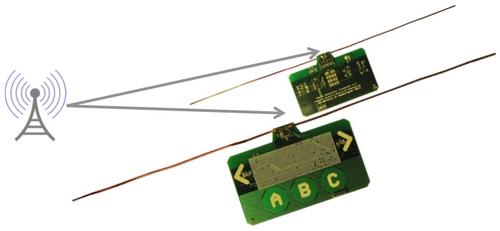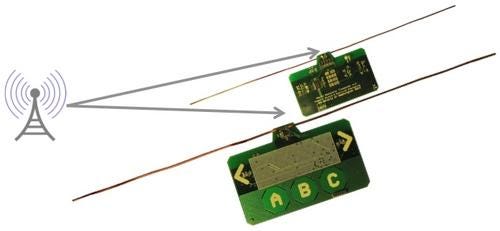Researchers Power Sensors, Camera With WiFi Signals
June 12, 2015

A couple of years ago we told you about some University of Washington (UW) students who'd developed technology that could pull energy from WiFi signals. Well that technology may soon be ready for prime time, as the team recently demonstrated some initial devices powered by energy beamed from wireless signals in real-life situations.
The research team of Vamsi Talla, Bryce Kellogg, Benjamin Ransford, Saman Naderiparizi, Shyamnath Gollakota, and Joshua R. Smith have demonstrated the "first power over WiFi system that delivers power and works with existing WiFi chipsets," they said in an abstract for a paper about the demonstration, entitled "Powering the Next Billion Devices with WiFi."

Specifically, the team showed that "a ubiquitous piece of wireless communication infrastructure, the WiFi router, can provide far field wireless power without compromising the network's communication performance," they wrote. For the first time, temperature and camera sensors operating without batteries used power only from WiFi chipsets with ranges of 20 feet and 17 feet, respectively.
MORE FROM DESIGN NEWS: New Battery Comprised Solely of Lithium-Sulfur-Based Compound
Researchers also demonstrated that they could wirelessly recharge nickel-metal hydride and lithium-ion coin-cell batteries at distances of up to 28 feet. Moreover, they said they deployed the system in six residential houses and found that the design successfully delivered power via WiFi over a typical network connection and conditions.
Clearly, the UW team has made significant progress in the two years since it unveiled the enabling technology for this type of WiFi power transfer -- then called ambient backscatter -- to the energy-harvesting world in 2013, and posted an initial video showing how it worked.
The technology is now called Power over WiFi, or PoWiFi, and it works in the same way a simple antenna can pick up the signals that a WiFi radio broadcasts, according to an article about the technology in the MIT Technology Review. To harvest energy from WiFi for a sensor, the UW team connects an antenna to the sensor, places it close to a WiFi router, and measures the energy voltages in the device and for how long it can operate on just that single power source.
MORE FROM DESIGN NEWS: Battery-Free Mobile Devices Communicate Pulling Signals From Air
One problem researchers ran into is that WiFi broadcasts are not continuous but rather broadcast on a single channel in bursts, which would drop the voltage when the broadcast ended, according to the MIT article. To solve this issue, UW researchers programmed the router to broadcast noise when it's not broadcasting information and used adjacent WiFi channels for their energy broadcast so it didn't interfere with data rates.
In addition to the sensors, the team also attached a low-power camera to the antenna, which they found could operate about five meters from the router with an image capture every 35 minutes, according to the article.
While the technology still requires testing and further development to provide enough continuous energy for larger devices, it seems PoWiFi is off to a promising start and could eventually play an integral role as a power source for the emerging Internet of Things.
Elizabeth Montalbano is a freelance writer who has written about technology and culture for more than 15 years. She has lived and worked as a professional journalist in Phoenix, San Francisco, and New York City. In her free time she enjoys surfing, traveling, music, yoga, and cooking. She currently resides in a village on the southwest coast of Portugal.
Design & Manufacturing Canada, the largest advanced design and manufacturing trade show serving Canada, will take place in Toronto, June 16-18, 2015. Learn more here.
About the Author(s)
You May Also Like

.jpg?width=300&auto=webp&quality=80&disable=upscale)

